*This post MAY contain affiliate links. That means that if you make a purchase after clicking on a link I may earn a small commission at no extra cost to you. I don’t ever recommend something that I don’t use myself. Not all links are affiliate links. For more information, see our Privacy Policy.
Redwork Technique Tips

What is Redwork?
Redwork is a form of embroidery which uses red floss or heavy thread to trace simple line drawings. Traditionally, animal themes, children’s themes, nature themes, and kitchen themes. This embroidery can be done in other colors, changing the name to greenwork or bluework, etc.
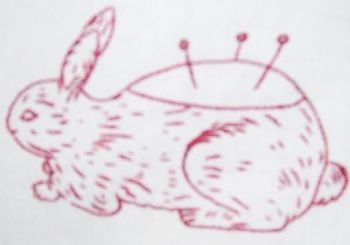
Black Redwork refers to a specific single-thread embroidery technique. It became popular during the Victorian era as women searched for new ways to decorate their homes. The idea of Redwork came to America from Europe, where it was called “Turkey work”. Turkey red was one of the few colorfast colors of the time.
Penny Squares
These embroideries were also called “penny squares”. According to quilt historian Cindy Brick, “the term ‘penny squares’ only holds true for a brief time, when a square of fabric stamped with a pattern was a penny – and so was a skein of red cotton floss.” Muslin squares were sold with the patterns marked for a penny each. These then could be used as quilt blocks with sashing added around the borders. The Victorians also used Redwork to embellish tea towels, aprons, pillow covers, splashers, and other Victorian decorations.
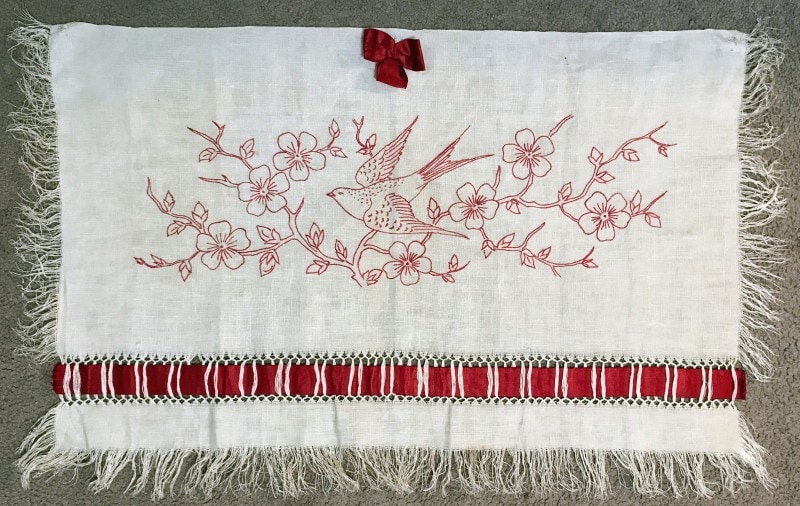
Redwork Technique Tips
Stitches
Traditionally the main stitch that was used to outline the designs was the Stem Stitch (worked with the working-thread to the right of the needle) or Outline stitch (working-thread to the left of the needle). This type of stitching was called the Kensington stitch and was popularized by the Kensington School for Girls in England during the 1880s.
The Satin Stitch was used sparingly to fill in small enclosed areas. The Backstitch or the split stitch was used to cover tight curves and occasionally to outline the designs. The Straight Stitch was used to cover small straight lines. French Knots were used for eyes, strawberry specks, and any other place where a small dot was needed. The Feather Stitch was used along the seams of pieced quilt blocks.
Tracing
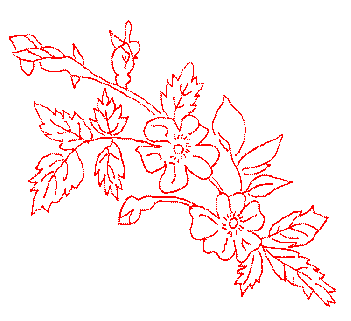
To begin your redwork project, first trace the design lightly on the muslin with a sharp lead pencil or water-soluble pen by placing the design under the muslin. A lightbox makes this easier, but taping your design to a window will work, too.
Clover makes a pen that makes a fine white line that can be erased or removed with water. If you prefer, you can trace your design with a pencil or pen onto tulle or nylon netting, then lay the tulle over your ground fabric and trace through the tulle using a white pen or chalk.
To Hoop or Not to Hoop?
Whether you use a hoop or not depends on how you stitch. If you stitch with your hand below the fabric, push the needle to the front, then transfer your hand to the top and push the needle to the bottom, you should use a hoop. Be sure to remove your project at the end of each session to avoid hoop marks. But if you keep your hand on top of the fabric to make your stitches, then not using a hoop may work best since this places more stress on the fabric’s tautness.
Thread
Usually, you will thread your needle with 2 strands of floss. Generally, you use one strand is used for very delicate outlines while 4 strands gives a bolder coverage. Use DMC embroidery floss – number 817 (dk coral red), 498 (dk Christmas red), or 304 (med Christmas red) If you are using Sulky (Cotty) thread, the BayBerry Red is the closest in color to DMC 498, and the 12wt is about two strands of floss.
Needles
Embroidery needles have large, long eyes and sharp points. A size 9 is a good size for all Redwork. Use a needle threader. Thread the newly cut end into the needle, folding the floss end in half and threading that through the eye if you have trouble. To keep your embroidery firmly in place, use a simple single wrap knot to secure your endings. To hide your tails, or for a smoother back, begin and end by laying floss along the back and taking a few catch stitches over it or weaving the tail through two or three stitches. This is important for redwork which will be used as quilt blocks.
Have another tip to offer? Send it to me or reply below and I will add it here.
Don’t forget to sign up for the newsletter! Once a week, I send updates on quilt-related information I have found while wandering the web. This might be an inspiring article, a tip or tutorial I have discovered (or written), and occasionally exclusive offers & discounts as well as immediate access to the secret page of free patterns, guides, and printables. You can follow my page on Facebook, or join the Make Believe Quilters group, too.
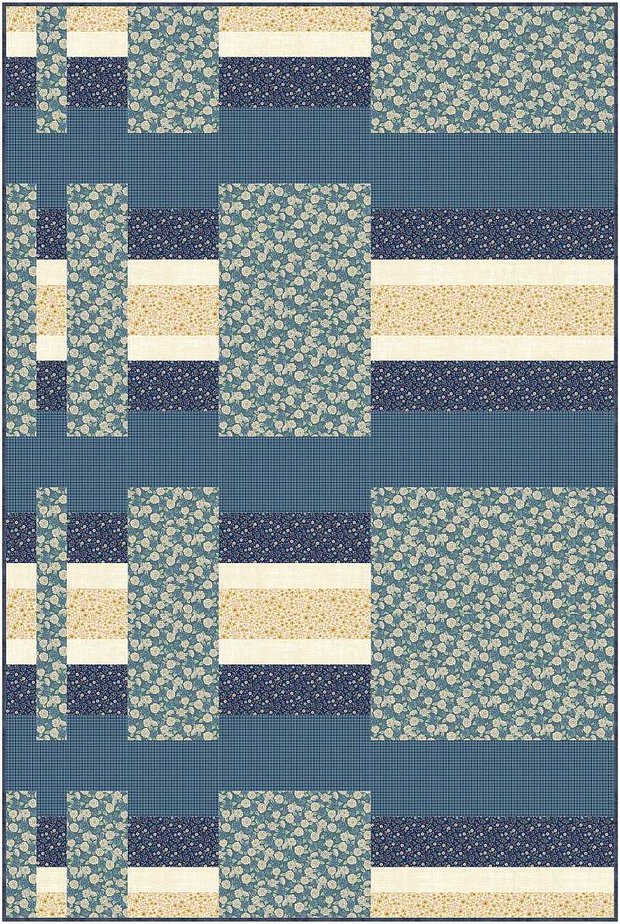
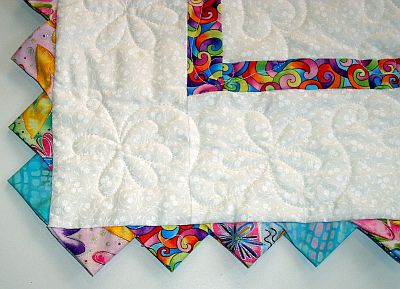
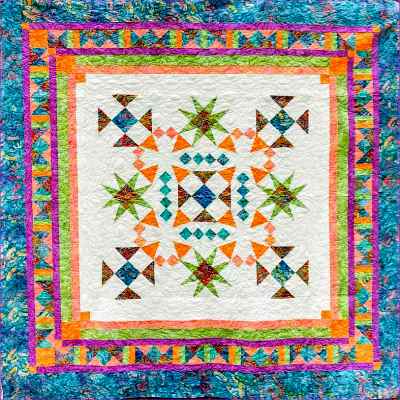
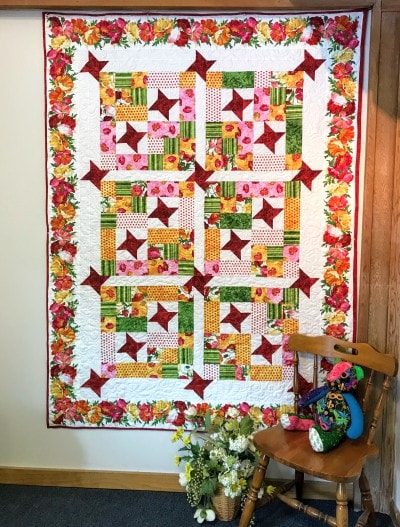

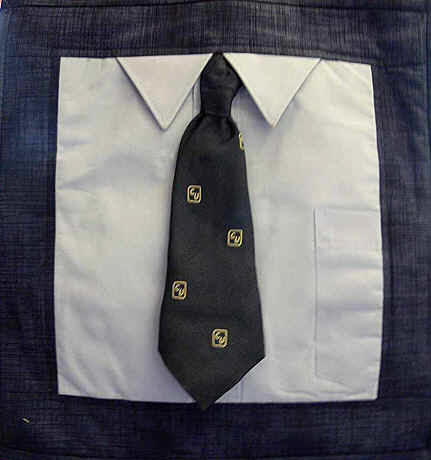
Thanks for the good Redwork tips.